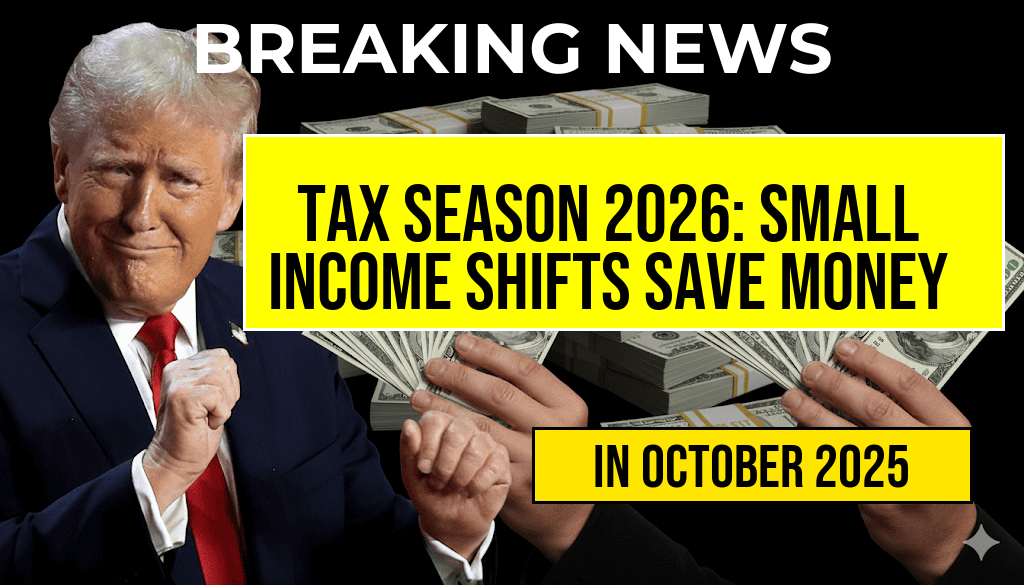Tax Season 2026: Bloomberg Projections Reveal Minor Income Bracket Shifts That Could Save You Hundreds
As taxpayers gear up for the 2026 tax season, recent projections from Bloomberg suggest subtle but impactful shifts in income brackets that could result in significant savings for many Americans. The changes stem from adjustments in inflation rates and legislative updates, leading to minor realignments in federal income tax brackets. While these alterations are modest, their cumulative effect could mean hundreds of dollars in savings for households across various income levels. Taxpayers are advised to review the revised brackets carefully and consider strategic planning to optimize their refunds or reduce liabilities.
Understanding the Changes in Income Brackets
Each year, the Internal Revenue Service (IRS) adjusts tax brackets to account for inflation, preventing bracket creep—where inflation pushes taxpayers into higher brackets even without an actual increase in purchasing power. For 2026, Bloomberg’s analysis indicates that the inflation adjustments have resulted in slight upward shifts in most brackets, especially within the lower and middle-income ranges.
These shifts are driven by an estimated inflation rate of approximately 3.2%—a figure derived from recent Consumer Price Index (CPI) data—leading to minor realignments in the thresholds used to determine tax rates. While the overall structure remains consistent with previous years, the specific income ranges for each bracket have been marginally increased, potentially reducing tax burdens for some households.
Key Changes in Federal Income Tax Brackets for 2026
| Tax Rate | Previous Bracket Range (2025) | Revised Bracket Range (2026) |
|---|---|---|
| 10% | $0 – $11,000 | $0 – $11,350 |
| 12% | $11,001 – $44,725 | $11,351 – $45,950 |
| 22% | $44,726 – $95,375 | $45,951 – $97,600 |
| 24% | $95,376 – $182,100 | $97,601 – $186,950 |
| 32% | $182,101 – $231,250 | $186,951 – $238,350 |
| 35% | $231,251 – $578,125 | $238,351 – $598,000 |
| 37% | $578,126 and above | $598,001 and above |
Similar adjustments are anticipated for married filing jointly and head-of-household categories, with proportional increases in their respective brackets. These changes effectively expand the thresholds, potentially lowering tax bills for many.
Impact on Taxpayers and Potential Savings
While the shifts may seem marginal—generally a few hundred dollars for typical earners—they can compound over time, especially for those near bracket thresholds. For example, a single filer earning $45,000 annually might see their taxable income fall within a lower bracket, resulting in a decreased tax rate applied to a portion of their income.
Bloomberg’s projections estimate that approximately 15 million taxpayers could benefit from these adjustments, saving an average of $200 to $300 each during the tax season. For higher earners close to the upper limits of lower brackets, the savings could reach upwards of $500, especially if combined with other deductions and credits.
Strategic Considerations for Tax Planning in 2026
- Review Income Thresholds: Taxpayers should compare their current income with the revised brackets to assess potential benefits.
- Maximize Deductions and Credits: With slight shifts in brackets, leveraging available deductions could further reduce taxable income.
- Consult Tax Professionals: Given the nuances of these adjustments, professional advice can optimize tax strategies, especially for business owners and high-income households.
Legislative Context and Future Outlook
The 2026 adjustments are partly a result of the Inflation Reduction Act and ongoing efforts to modernize tax policy. Policymakers aim to prevent bracket creep and ensure that tax burdens remain equitable amidst economic fluctuations. Experts from the IRS and leading financial analysis firms continue monitoring these changes for their long-term implications.
As federal tax policies evolve, taxpayers should stay informed about updates that could influence their financial planning, especially as new legislation or inflation trends develop. Staying proactive can help minimize liabilities and maximize refunds during the upcoming tax season.
Frequently Asked Questions
Question
What are the main income bracket shifts projected for Tax Season 2026 according to Bloomberg?
Question
How could these income bracket adjustments potentially save taxpayers money during the 2026 tax season?
Question
Are there any significant changes in tax credits or deductions associated with these income bracket shifts?
Question
When will the income brackets for 2026 be officially announced by the IRS, and how can taxpayers prepare?
Question
What strategies should taxpayers consider to maximize their tax savings given these upcoming changes?

Leave a Reply